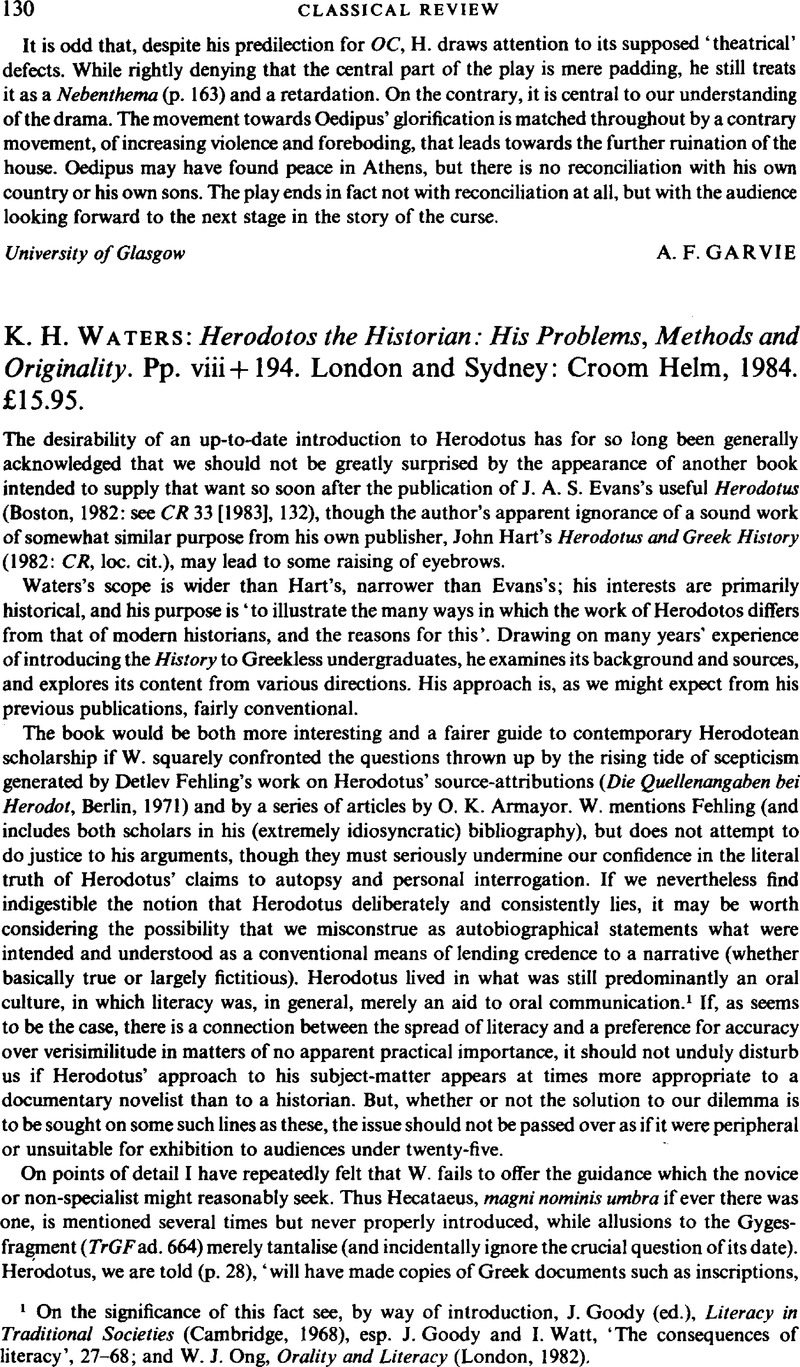No CrossRef data available.
Article contents
K. H. Waters: Herodotos the Historian: His Problems, Methods and Originality. Pp. viii + 194. London and Sydney: Croom Helm, 1984. £15.95.
Published online by Cambridge University Press: 16 February 2009
Abstract

- Type
- Notices
- Information
- Copyright
- Copyright © The Classical Association 1986
References
1 On the significance of this fact see, by way of introduction,Goody, J. (ed.), Literacy in Traditional Societies (Cambridge, 1968)Google Scholar, esp. J. Goody and I. Watt, ‘The consequences of literacy’, 27–68; and Ong, W. J., Orality and Literacy (London, 1982).Google Scholar
2 The epigram quoted at 5.77 (cf. Meiggs-Lewis, GHI no. 55) is not as good an example as Waters's account of it would suggest (p. 88): ‘He [sc. Herodotus] states … that he saw and copied the inscription celebrating the Athenian victory over the Boiotians and Chalkidians, scorched as it was by the Persian burning of the Akropolis.’ But Herodotus does not claim to have inspected the inscription for himself, and it is certainly conceivable that his knowledge of this easily memorised text is second-hand; moreover, since the version which he quotes represents the form in which the epigram was restored in the mid-fifth century (probably after Oenophyta), with the hexameters reversed, it is just as well that he does not say it was scorched, since there was no reason why it should be.
3 Whatley, N., JHS 84 (1964), 129.Google Scholar




